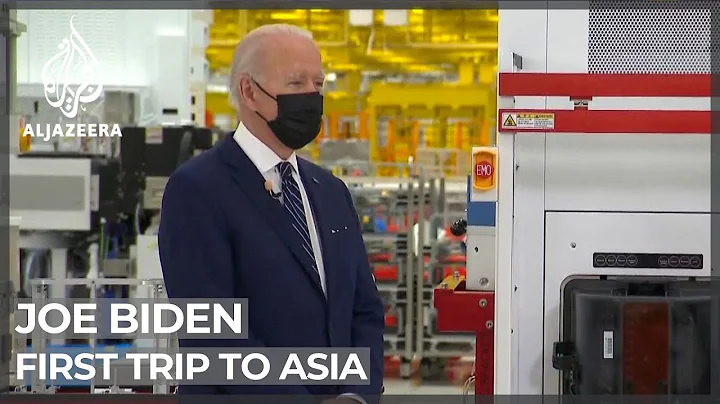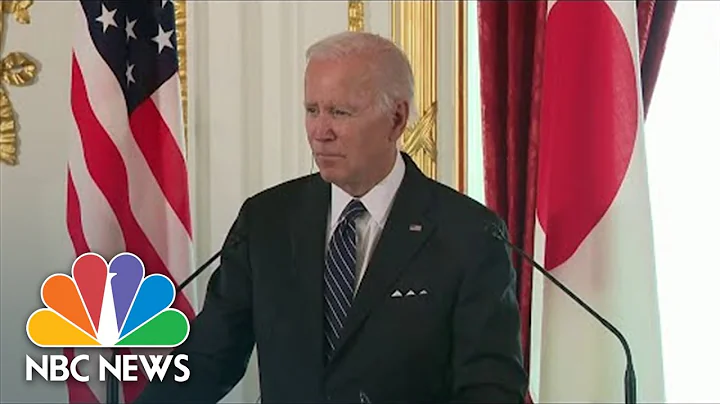
Author Ai Lin Taiwan Special Commentator
html In late May, US President Biden made his first trip to Asia during his term. It was already known at the time that Biden would announce the Indo-Pacific Economic Framework (IPEF) during the trip; originally the island People from all walks of life expected that Taiwan would also be included in the first-round list. However, only halfway through Biden’s trip, the White House announced that Taiwan was not included in the first-round list.On the one hand, the United States has long realized that if Taiwan-US relations change due to Taiwan not joining the Indo-Pacific economic architecture, it may no longer have an excuse to continue to ask for and take from Taiwan. Furthermore, the Democratic Progressive Party is worried that Taiwan’s internal pressure cooker will be opened; While Den was still visiting Northeast Asia , U.S. Trade Representative Dai Qi and Taiwan's "political commissar" Deng Zhenzhong met in Thailand on May 20. After the meeting, they jointly issued a statement stating that the two sides touched on "deepening the economic relationship between the United States and Taiwan". Opportunity", "vaccinated" in advance.
What does "opportunity to deepen U.S.-Taiwan economic relations" mean? Just when everyone was feeling disappointed and suspected that the United States had once again treated Taiwan as an abandoned child, on June 1, Taiwan and the United States announced in a high-profile manner that they would launch "Taiwan-U.S. 21st Century Trade" Initiative", the two sides will negotiate on 11 other goals including trade facilitation, excluding tariff issues, with the ultimate goal of signing the Taiwan-US Economic and Trade Agreement (BTA). In a matter of seconds, Taiwan's internal mood went from extremely disappointed to overjoyed. It seemed as if something had been lost, and the DPP once again had an opportunity for internal propaganda.
Taiwan and the United States can have trade initiatives, but they have not allowed Taiwan to join the Indo-Pacific economic architecture. This reflects that the United States is still exercising restraint and does not want to anger China because of Taiwan. As a result, many public opinion reflects that the Taiwan-US 21st Century Trade Initiative is just a "consolation prize" for the United States to compensate Taiwan for not being included in the first round of the Indo-Pacific Economic Framework.
However, some royal scholars immediately expressed their opinions and led the public opinion. For example, the analysis of the Indo-Pacific economic structure has so far only conceptualized four pillars, namely digital economy and AI standards, supply chain resilience, clean energy and carbon reduction, and tax integration. and anti-corruption; but the Taiwan-U.S. initiative has clearly listed trade facilitation, law and regulation, agriculture, anti-corruption, small and medium-sized enterprises, digital trade, labor, environmental protection, standards, state-owned enterprises, non- market economy , etc. With 11 clear negotiation topics, the two sides can look forward to negotiations "faster" and are expected to conclude the Indo-Pacific economic architecture faster.
Even within Taiwan, they are complacent that the goals of the 11 topics of the Taiwan-US 21st Century Trade Initiative are clear and clear, and that Taiwan’s level of “international integration” in trade is even better than that of the 14 founding members of the current Indo-Pacific economic architecture. For some countries, it is not ruled out that the results of future Taiwan-US trade negotiations can serve as a template and guideline for future negotiations on the Indo-Pacific economic architecture.
It should be noted that if the Taiwan-U.S. initiative is truly used as a "test field" for negotiations on the Indo-Pacific economic architecture between the United States and other countries, the United States will be able to leverage the disparity in bilateral strength between Taiwan and the United States as a bargaining chip to conquer Taiwan first and then proceed to the Asia-Pacific. Economic architecture negotiations. We can’t help but worry that under the increasingly pressing “America First” doctrine of the United States, the outcome of the Taiwan-US negotiations will be that the Taiwan region will “lose more than the gain” and fall into the unequal treaty of ceding territory and paying compensation. ?
In fact, if compared The "four pillars" of the Indo-Pacific economic architecture and the "11 negotiation goals" of the Taiwan-US 21st Century Trade Initiative both reveal an atmosphere aimed at mainland China; for example, supply chain resilience implies stable supply of semiconductors. , and that manufacturing cannot be concentrated in mainland China in the past. These are in line with the core interests of "America First". Carbon emissions and air pollution are currently thorny issues in mainland China.
Looking at geographical location, the United States has attracted Japan, South Korea, India, Thailand, Vietnam , Malaysia , Singapore , Brunei , Philippines , Indonesia , Australia, New Zealand , etc. Countries jointly fight against mainland China, forming a situation in which countries from Northeast Asia, Southeast Asia, and the Pan-Pacific fully encircle and block mainland China. In order to avoid unnecessary complications, the United States also deliberately excluded Taiwan from the Indo-Pacific structure to avoid touching the sensitive nerves of "One China".
In addition, in order to attract the 13 Indo-Pacific countries to join the United States, the United States has also opened up the flexibility of the four pillars to freely participate without forcing full acceptance.
The United States has set up these scenarios with great deliberation and invited countries in the Indo-Pacific region to join forces to contain China. But can such a plan really contain mainland China? Compared with the China-led Regional Comprehensive Economic Partnership Agreement (RCEP) Therefore, incentives such as lowering tariffs and opening up markets serve as the glue to unite the participation of 15 countries; in comparison, the Indo-Pacific Economic Framework (IPEF) does not have economic incentives to lower tariffs. On the contrary, these "America First" "Once a consensus is reached on the project, the benefits will be reaped by the Americans, and other countries will not benefit much.
can conclude that Japan, South Korea, Vietnam, Malaysia, Singapore, Thailand and other countries that have participated in the Indo-Pacific Economic Architecture and RCEP at the same time seem to be just thinking about how to prevent small countries from choosing sides in the overall situation of confrontation between China and the United States. It's just a flexible space for maneuver. Even if the United States coerces and induces Asia-Pacific countries to move closer to the United States, if it wants to use the Indo-Pacific economic structure to frame China? "Without beef," I am afraid it will be difficult to make these countries switch sides.





















